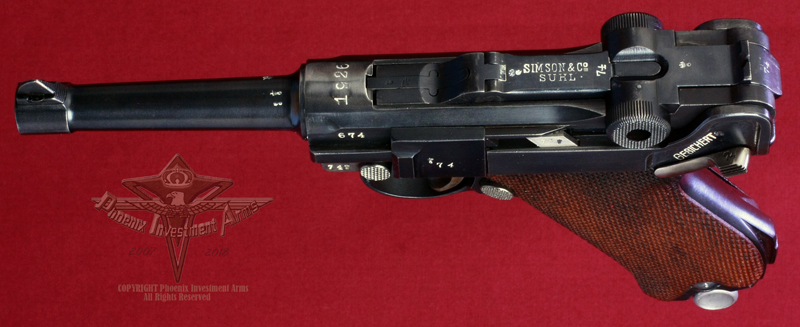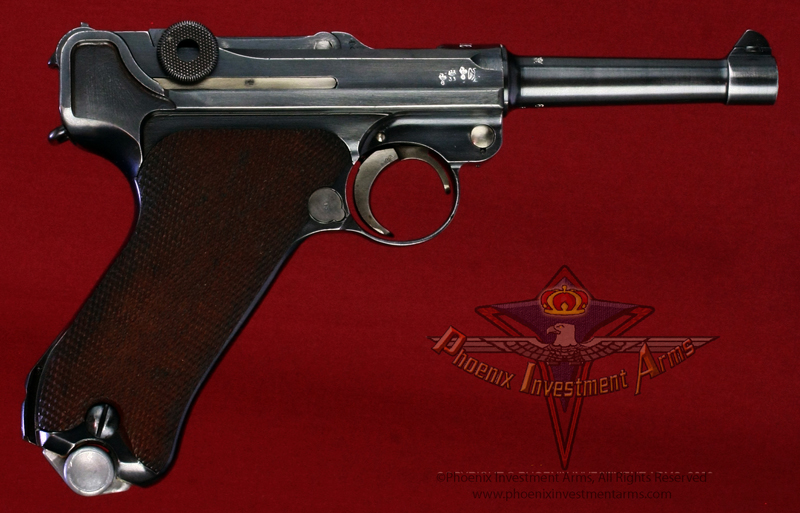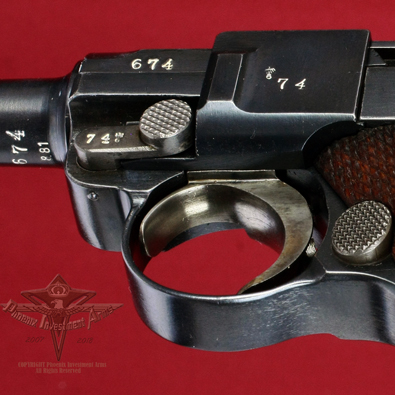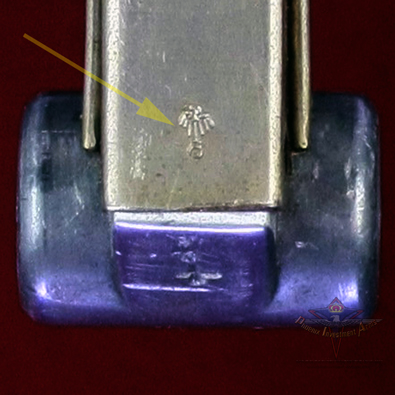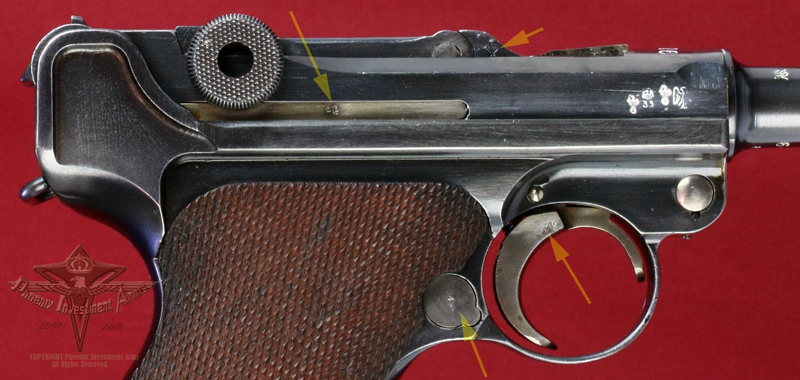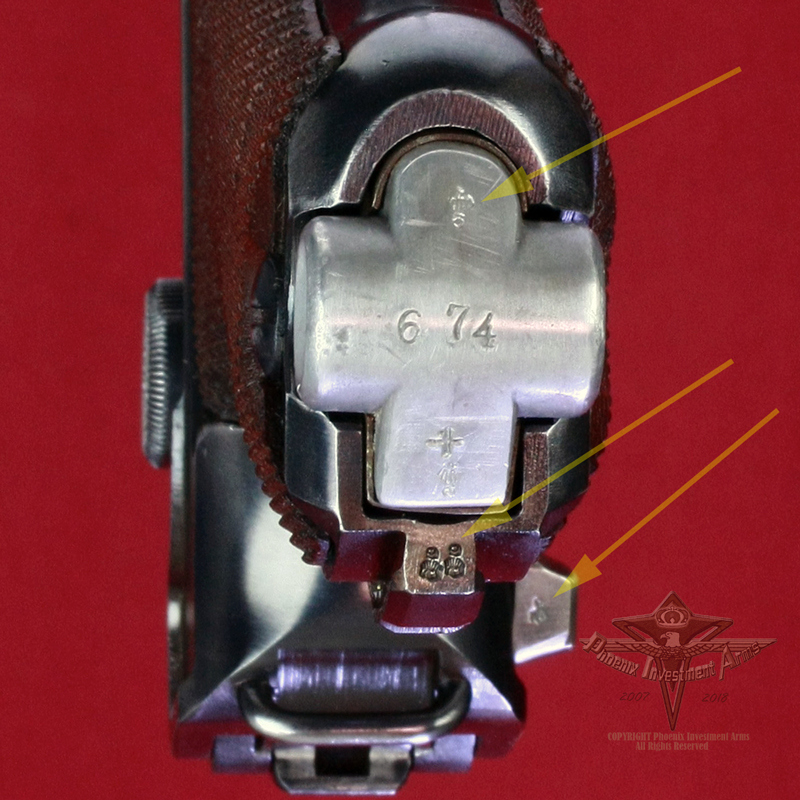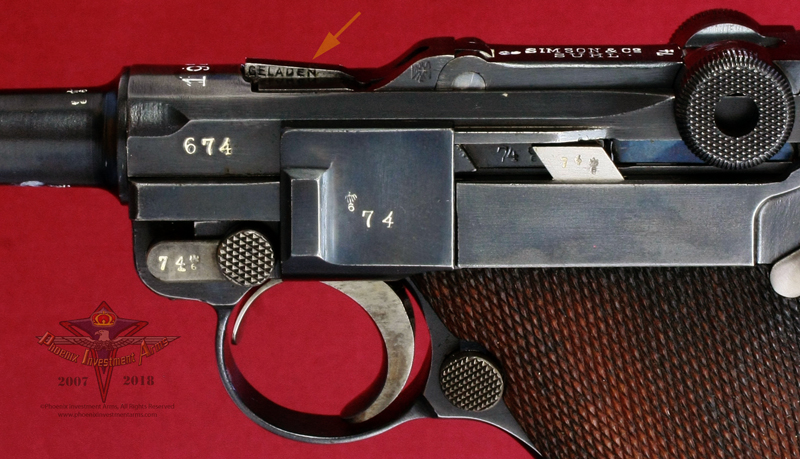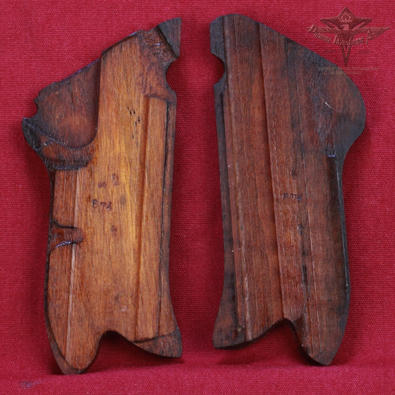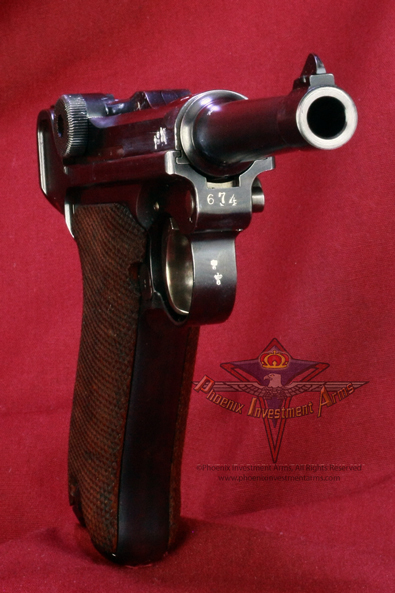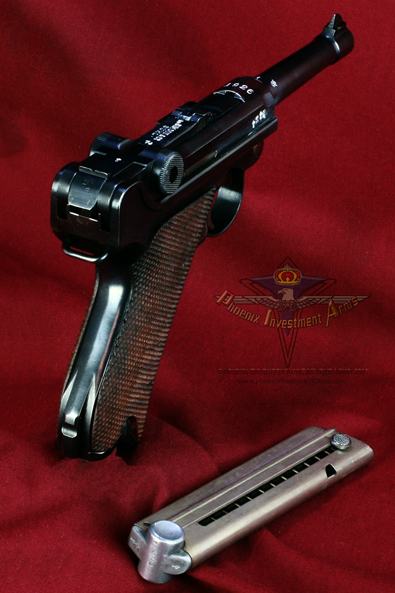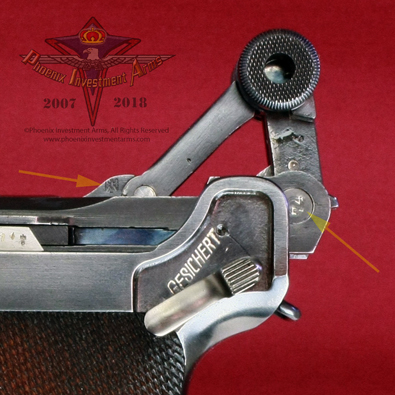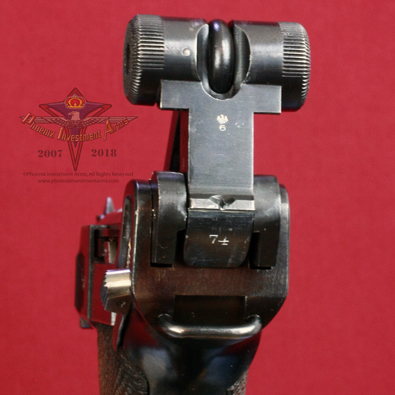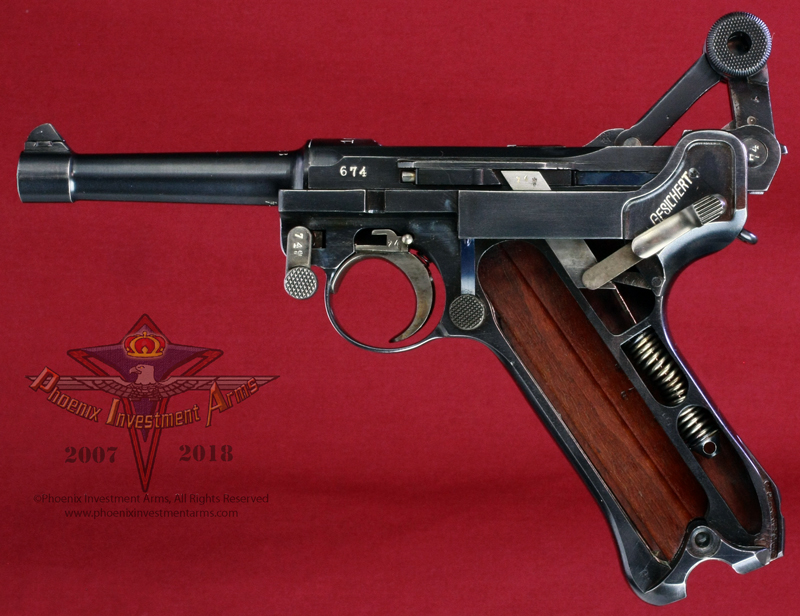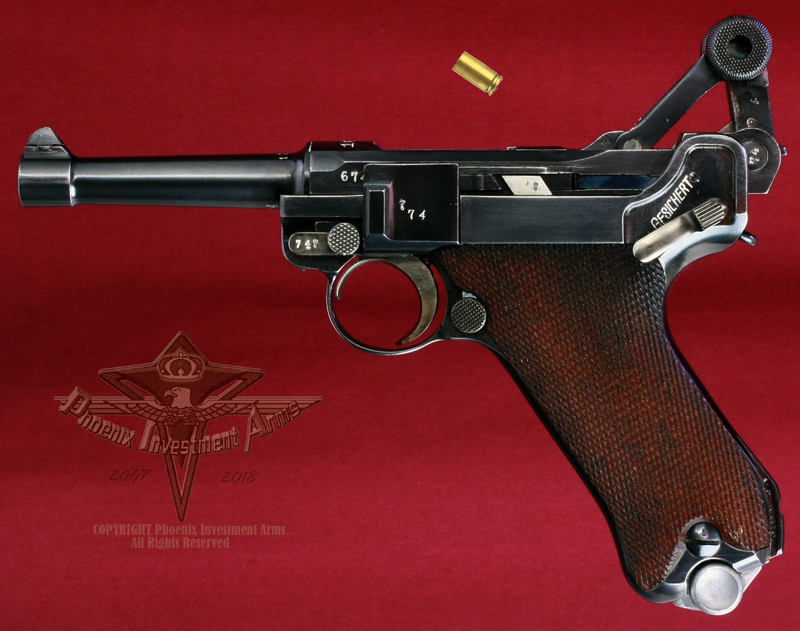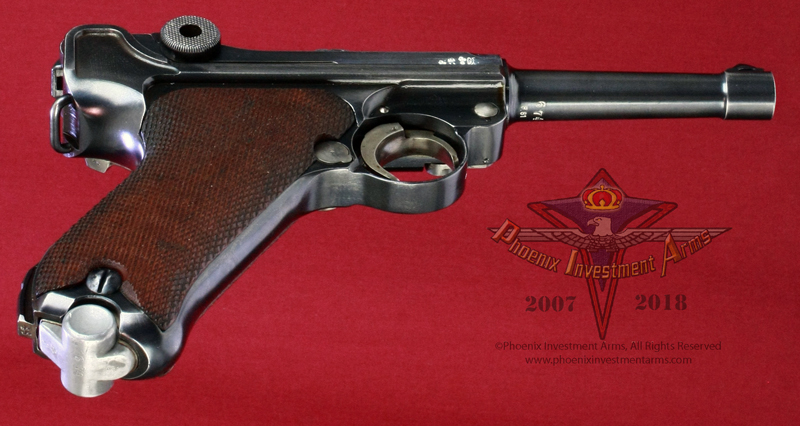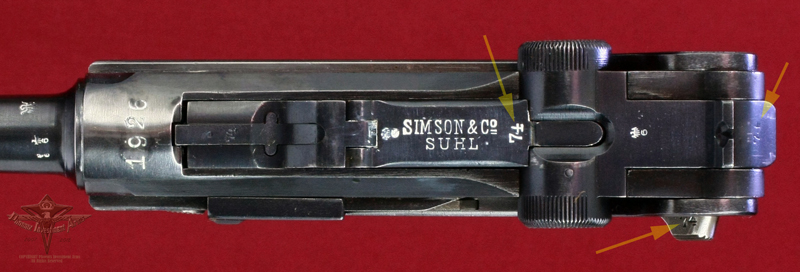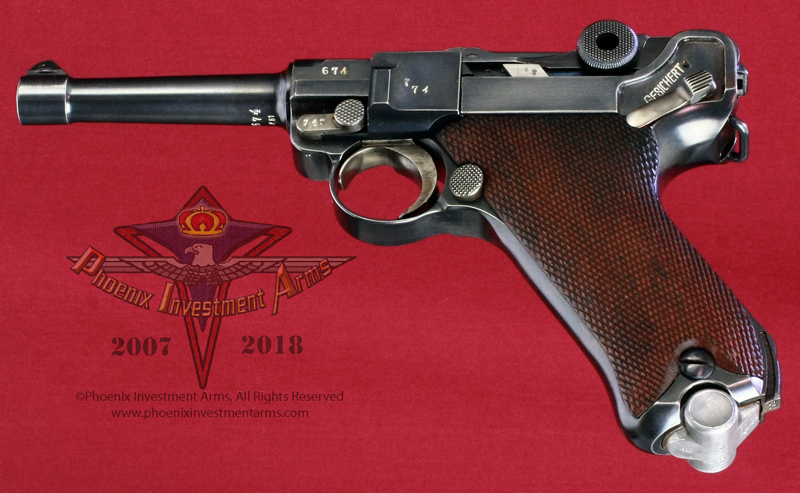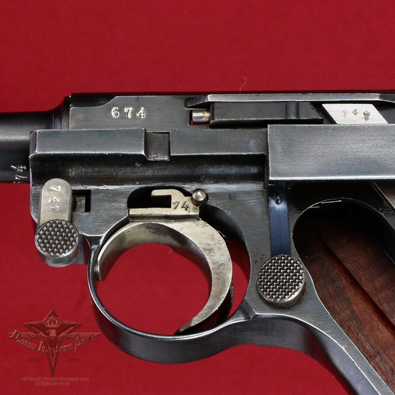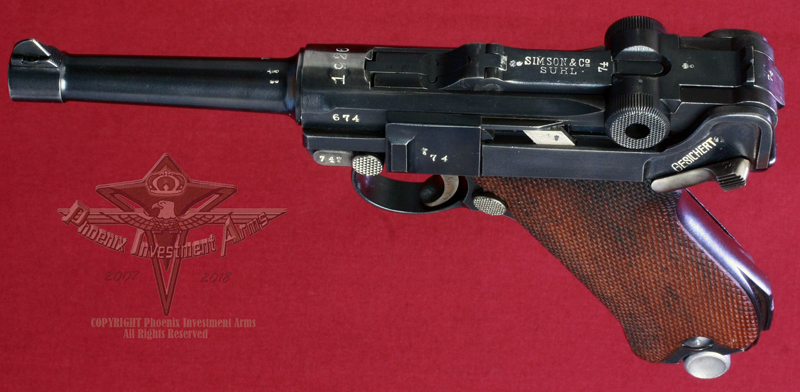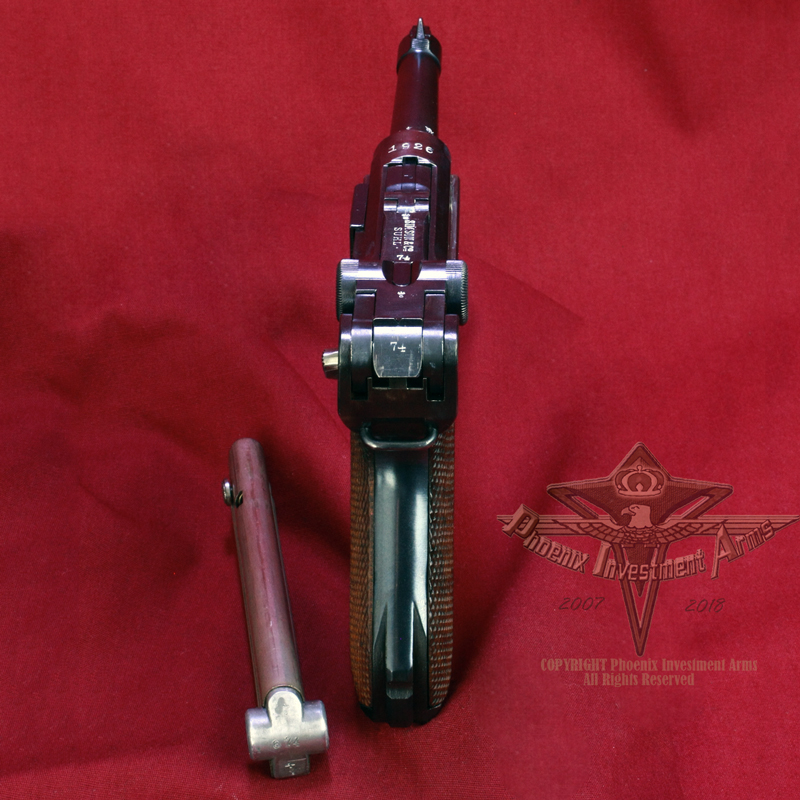|
Almost
indefinable, there are proof marks on the grip screws. (Right Photo)
Jan Sill in
his book Weimar and Early Nazi Lugers pictures on page 69 and 71 shows the
1926 dated Simson.
See also
Kenyon, Page 222-223, Lugers at Random
|
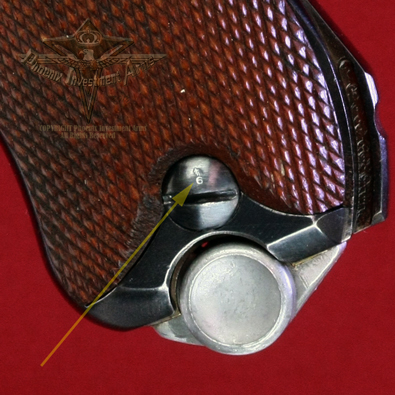
|
The most distinctive feature of these
pistols is undoubtedly the toggle-lock mechanism, which holds the breech
closed by locking in a manner not unlike the human knee, which can
sustain a heavy weight when straight, but once bent is quite easy to
continue to bend. The toggle joint in its straight position resists the
rearward force of the detonating cartridge, then "buckles" after enough
time has passed. When a round is fired the entire breech, barrel and toggle move straight
rearward (on rails) until the toggle begins to ride up on a pair of cams
that "breaks" the toggle (makes it bend at the joint).
Once the
toggle joint is no longer straight, it bends freely, allowing the bolt
to come rearward, and the striker to be cocked. The spent cartridge is
extracted by a combination extractor/loaded chamber indicator on the top
of the toggle, is ejected as the toggle nears the end of its rearward
free travel, returning, and a new round is stripped from the magazine and
chambered as the toggle is driven back to the straight position by a
spring. |
